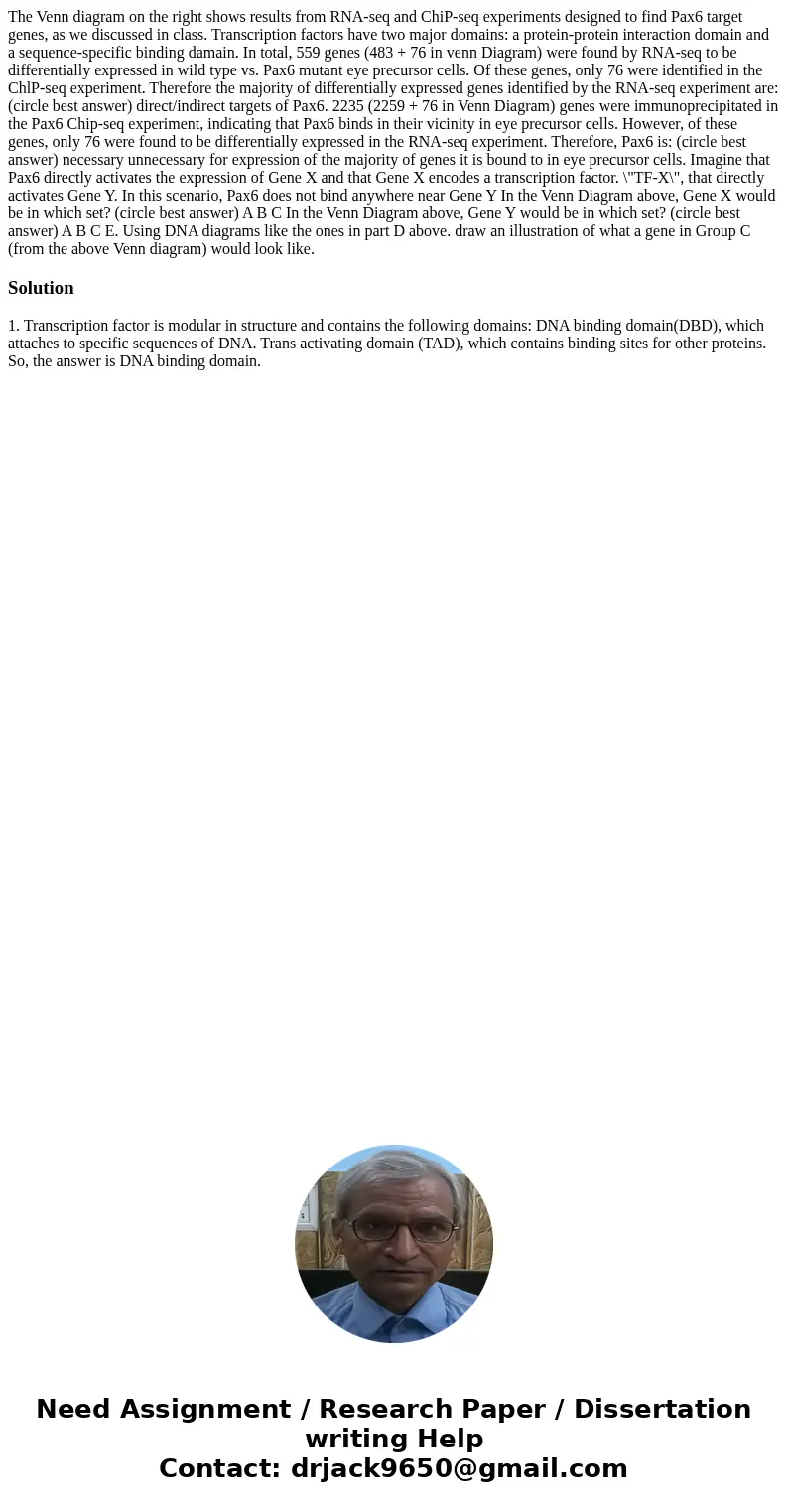The Venn diagram on the right shows results from RNAseq and
The Venn diagram on the right shows results from RNA-seq and ChiP-seq experiments designed to find Pax6 target genes, as we discussed in class. Transcription factors have two major domains: a protein-protein interaction domain and a sequence-specific binding damain. In total, 559 genes (483 + 76 in venn Diagram) were found by RNA-seq to be differentially expressed in wild type vs. Pax6 mutant eye precursor cells. Of these genes, only 76 were identified in the ChlP-seq experiment. Therefore the majority of differentially expressed genes identified by the RNA-seq experiment are: (circle best answer) direct/indirect targets of Pax6. 2235 (2259 + 76 in Venn Diagram) genes were immunoprecipitated in the Pax6 Chip-seq experiment, indicating that Pax6 binds in their vicinity in eye precursor cells. However, of these genes, only 76 were found to be differentially expressed in the RNA-seq experiment. Therefore, Pax6 is: (circle best answer) necessary unnecessary for expression of the majority of genes it is bound to in eye precursor cells. Imagine that Pax6 directly activates the expression of Gene X and that Gene X encodes a transcription factor. \"TF-X\", that directly activates Gene Y. In this scenario, Pax6 does not bind anywhere near Gene Y In the Venn Diagram above, Gene X would be in which set? (circle best answer) A B C In the Venn Diagram above, Gene Y would be in which set? (circle best answer) A B C E. Using DNA diagrams like the ones in part D above. draw an illustration of what a gene in Group C (from the above Venn diagram) would look like.
Solution
1. Transcription factor is modular in structure and contains the following domains: DNA binding domain(DBD), which attaches to specific sequences of DNA. Trans activating domain (TAD), which contains binding sites for other proteins. So, the answer is DNA binding domain.

 Homework Sourse
Homework Sourse